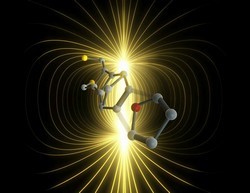Single-molecule electronic devices come a step closer
Molecular wires are the proposed building blocks for molecular electronic devices, connecting different parts of a molecular electrical circuit. Attaching the ends of the molecules to the electrodes, so that the electrons can move freely in and out of the wire, is one of the biggest problems that researchers encounter in their bid to create reliable and reproducible electrical contacts. Anchoring molecules to the electrodes is one way to obtain good electrical contact. Proper choice of chemical groups making the connection governs the stability and electrical properties of single-molecule devices. Within the SINGLE-MOLEC-SWITCH (Developing single-molecule switches for applications in nanoscale organic devices) project, scientists reported the formation of stable molecular junctions with contact groups that were used for the first time (1-alkynes). Results demonstrated that alkyne groups are stable and have high affinity to gold, opening the door for further studies of single-molecule transport on semiconducting electronic platforms. The use of different types of semiconducting electrodes and doping meant that charge transport across the junctions could be controlled. Scientists introduced a new concept for building highly-efficient single-molecule electrical contacts by exploiting coordination complexes. Instead of using costly and time-consuming methods to modify porphyrin molecules, the team functionalised two electrodes with pyridine ligands that bonded to the porphyrin metal centre. The result was a new flat configuration of porphyrin molecules forming single-molecule junctions with very long lifetimes and high conductivity. Controlled manipulation of single molecules is very necessary when designing nanoscale circuits. Scientists successfully synthesised a unique type of photoswitch based on spiropyran, which is known for its photochromic properties. This molecular switch could be reversibly shifted between its conjugated form and the ground state upon light irradiation. In addition, it is the first single-molecule switch that shifts between two states triggered not just by light but also by a combination of other external influences. Furthermore, a scientist was able to speed up the reaction of individual molecular wires using electrical fields (2016 Nature, 531, 88-91). This is the first piece of experimental evidence of electrical fields catalysing non-redox reactions at the single-molecule level. Controllable molecules forming reliable electrical contacts will someday soon be the next electronic building blocks, replacing current micro-sized circuit elements. Tiny molecular circuits will reduce the cost and size of electronic devices, leading to revolutionary technology that will highly benefit the environment and healthcare. Analytical devices for the early detection of harmful chemicals and biological markers indicating disease onset are just some of the many exciting applications for molecular electronics.







